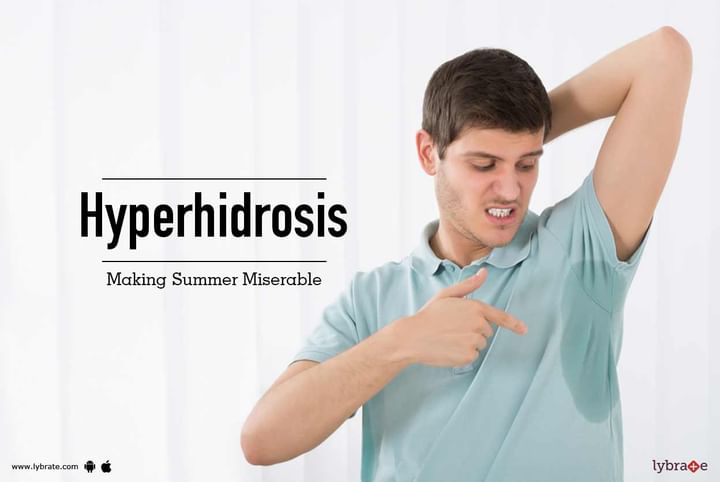Hyperhidrosis - Making Summer Miserable
Sweating is a normal function of the body, but some people sweat so much that their clothes are often drenched in sweat. Hyperhidrosis is a condition where the amount of sweat produced by the sweat glands cannot be regulated. It is characterized by excessive sweating commonly seen in the underarms, palms and soles. This disorder can affect a person at any age and if left untreated, can become a lifelong condition. Though this condition is not a serious threat to your health, it can be quite embarrassing and can hamper your lifestyle.
In many cases, there is no obvious trigger for Hyperhidrosis, and it is caused by the malfunctioning of the nervous system. This is known as primary Hyperhidrosis. Sweat is a function which helps the body cool itself. In cases of primary Hyperhidrosis, the brain sends a message to the sweat glands to produce sweat even though the body does not need to be cooled. A genetic mutation may also be the cause for some cases of Hyperhidrosis.
Hyperhidrosis with obvious trigger factors is known as secondary Hyperhidrosis. While primary Hyperhidrosis mostly affects the underarms, groin, palms and soles, secondary Hyperhidrosis can affect all parts of the body. Some of the common triggers for this condition are:
- Pregnancy
- Menopause
- Anxiety
- Low blood sugar
- Hyperthyroidism
- Medication side effects
- Alcohol or drug withdrawal
- Parkinson’s disease
Hyperhidrosis can be challenging to diagnose and treat. Lifestyle changes are the easiest way to address this disorder. Some changes that can help you fight Hyperhidrosis are:
- Avoid spicy food and alcohol
- Replace deodorants with antiperspirants
- Choose cotton fabrics over synthetic fabrics
- Wear loose fitting clothes.
- Try using armpit shields and wearing absorbent socks.
Anticholinergic or antimuscarinic medicines can also help treat Hyperhidrosis. This keeps the nervous system from activating the sweat glands. Dry mouth, blurred vision, constipation, abdominal cramps and difficulty in passing urine are some of the side effects associated with this medication. Iontophoresis is a more aggressive form of Hyperhidrosis treatment. This involves passing a weak electric current through a wet pad to the affected area to block the sweat glands. It is usually used to treat excessive sweating in the palms and soles.
Botox injections can also help treat Hyperhidrosis by blocking the brain signals to the sweat glands. However this is not a permanent cure and may need to be repeated after a year or so. Endoscopic thoracic sympathectomy or a surgery to remove the sweat glands may also be recommended in extreme cases of Hyperhidrosis. This is usually seen as a permanent solution for excessive sweating, but are relatively new procedures and hence not very common. If you wish to discuss about any specific problem, you can consult a dermatologist.



+1.svg)
